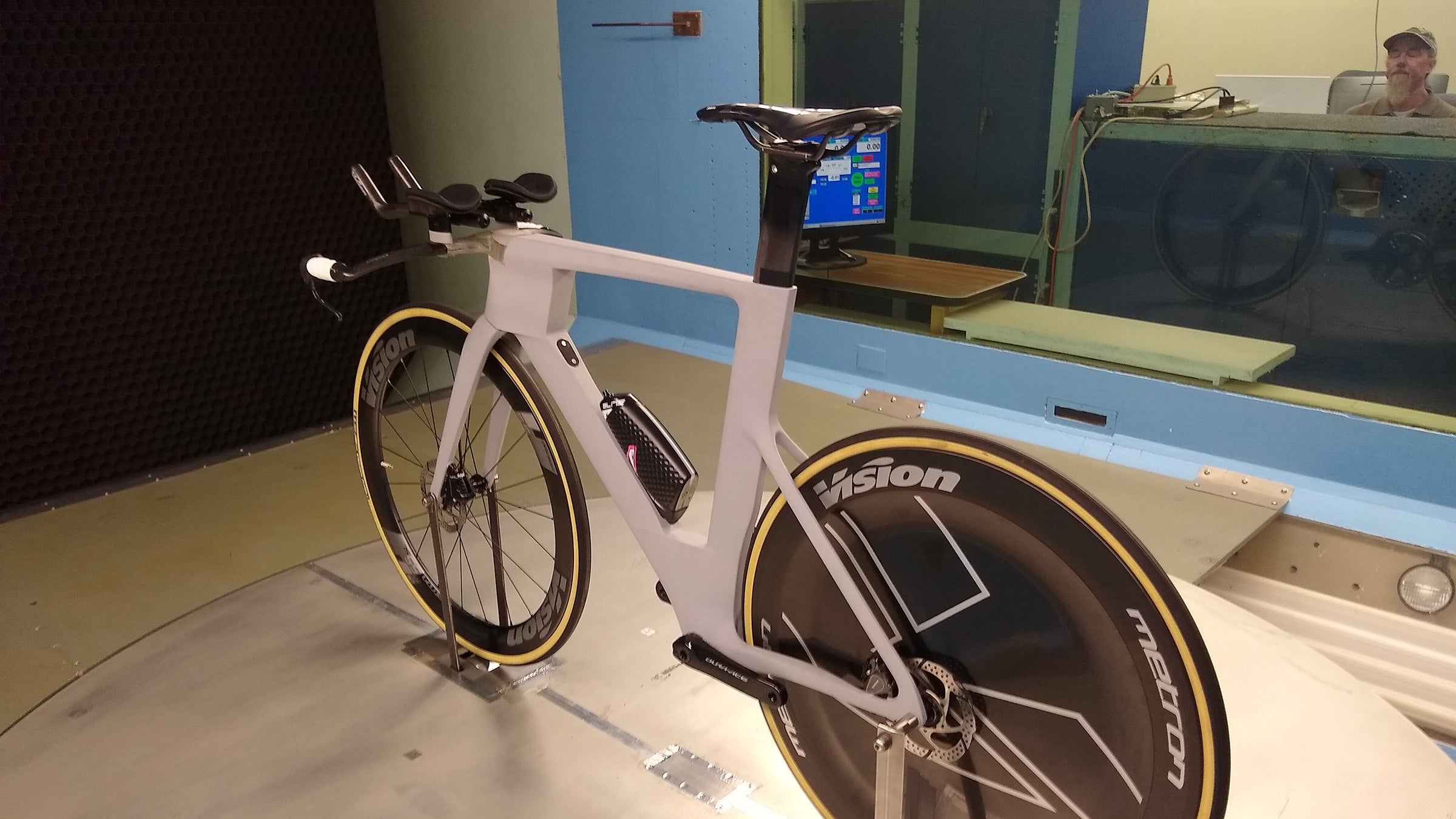An Inside Look at Cannondale’s New, Yet-To-Be-Named Bike

EF Education-Nippo riders raced the time trial on stage 5 of the Tour de France on an unreleased bike. After racing prototypes earlier in the season, the team now has a select few final bikes that should be released and available next year. Cannondale design engineer Nathan Barry and sports marketing global director Jonathan Geran spoke to VeloNews about the two-year process of creating the new bike, which they have not yet given a public name.
“We started working on the new bike two years ago, which is a compressed timeline for such an intricate machine,” Geran said. “But we were able to do so with everything we learned from the SystemSix [aero road bike].”

Cannondale worked with FSA and Vision for aerobars for the disc-brake bike, including a Vision Metron TFA basebar with a proprietary internal cable management system. Some riders get stock TFE extensions while others have custom molded extensions.
While some products are in large supply and readily available for all team riders, this new bike has not been one of them. U.S. 2021 Olympian Lawson Craddock, for instance, won the U.S. national time trial championship on the old SuperSlice.
“The plan is to get him on the new bike for the Olympic time trial,” Geran said.
While Cannondale does wind-tunnel work on its bikes — and spent time in the San Diego Wind Tunnel with this project — the bike company leaves rider positioning to the team.

“We don’t generally take riders into wind tunnel because of all the variables — a moving head, shoulder position, hand position, et cetera,” Geran said. “When we go to the wind tunnel we look at the variables from one test module to the next.”
Barry, who earned his Ph.D. in applied aerodynamics before coming to Cannondale, said the primary objective with the new bike was to shave weight.
“Obviously we wanted to save drag and save weight,” Barry said. “We had tested the current SuperSlice against the competition comprehensively, and we had a pretty good feel for where it sat. We were king of running into diminishing gains to get lower drag. However, we knew we could pull something substantial out of the weight.”
In fact, Cannondale was able to remove some 300g from the chassis. Rigoberto Urán’s complete bike weighs 8.58kg/18.9lb.
“With everything spent developing the SystemSix, we already knew that as a road bike it stacked up aerodynamically against any TT bike,” he said.

With aerodynamics dialed and weight shaved, the third pillar of the project was adding adjustability.
“We lent on Vision for the front end,” Barry said. “They already make a very good cockpit in the TFA. This bike basically uses a TFA, from the clamping mechanism forward. So we have a flippable basebar for height adjustment, and then X and Y movement of the pads, length adjustment on the extensions, and pitch adjustment for extensions.”
“Designing a TT cockpit is as complex as designing a TT chassis,” he said.
Whereas consumers can buy Vision extensions that telescope for length, EF Education-Nippo riders get molded extensions to fit their position.

On stage 5, EF Education-Nippo put four riders in the top 20, with Magnus Cort, Rigoberto Urán, Stefan Bissegger, and Neilson Powless finishing 12th, 13th, 18th, and 19th, respectively. The race wraps up with a 31km time trial on stage 20, just before the final ceremonial stage into Paris.
From VeloNews